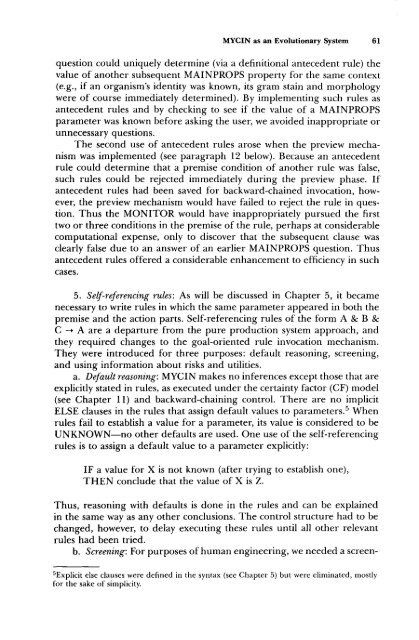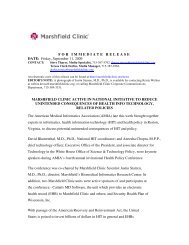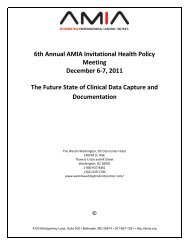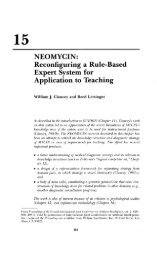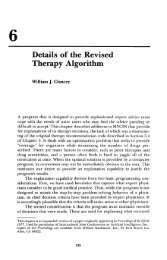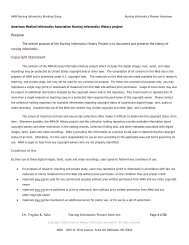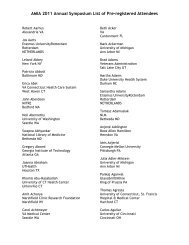Chapter 3 - People
Chapter 3 - People
Chapter 3 - People
Create successful ePaper yourself
Turn your PDF publications into a flip-book with our unique Google optimized e-Paper software.
MYCIN as an Evolutionary System 61question could uniquely determine (via a definitional antecedent rule) thevalue of another subsequent MAINPROPS property for the same context(e.g., if an organism’s identity was known, its gram stain and morphologywere of course immediately determined). By implementing such rules asantecedent rules and by checking to see if the value of a MAINPROPSparameter was known before asking the user, we avoided inappropriate orunnecessary questions.The second use of antecedent rules arose when the preview mechanismwas implemented (see paragraph 12 below). Because an antecedentrule could determine that a premise condition of another rule was false,such rules could be rejected immediately during the preview phase. Ifantecedent rules had been saved for backward-chained invocation, however,the preview mechanism would have failed to reject the rule in question.Thus the MONITOR would have inappropriately pursued the firsttwo or three conditions in the premise of the rule, perhaps at considerablecomputational expense, only to discover that the subsequent clause wasclearly false due to an answer of an earlier MAINPROPS question. Thusantecedent rules offered a considerable enhancement to efficiency in suchcases.5. Self-referencing rules: As will be discussed in <strong>Chapter</strong> 5, it becamenecessary to write rules in which the same parameter appeared in both thepremise and the action parts. Self-referencing rules of the form A & B &C --, A are a departure from the pure production system approach, andthey required changes to the goal-oriented rule invocation mechanism.They were introduced for three purposes: default reasoning, screening,and using information about risks and utilities.a. Default reasoning: MYCIN makes no inferences except those that areexplicitly stated in rules, as executed under the certainty factor (CF) model(see <strong>Chapter</strong> 11) and backward-chaining control. There are no implicitELSE clauses in the rules that assign default values to parameters. 5 Whenrules fail to establish a value for a parameter, its value is considered to beUNKNOWN--no other defaults are used. One use of the self-referencingrules is to assign a default value to a parameter explicitly:IF a value for X is not known (after trying to establish one),THEN conclude that the value of X is Z.Thus, reasoning with defaults is done in the rules and can be explainedin the same way as any other conclusions. The control structure had to bechanged, however, to delay executing these rules until all other relevantrules had been tried.b. Screening: For purposes of human engineering, we needed a screen-5Explicit else clauses were defined in the syntax (see <strong>Chapter</strong> 5) but were eliminated, mostlyfor the sake of simplicity.


